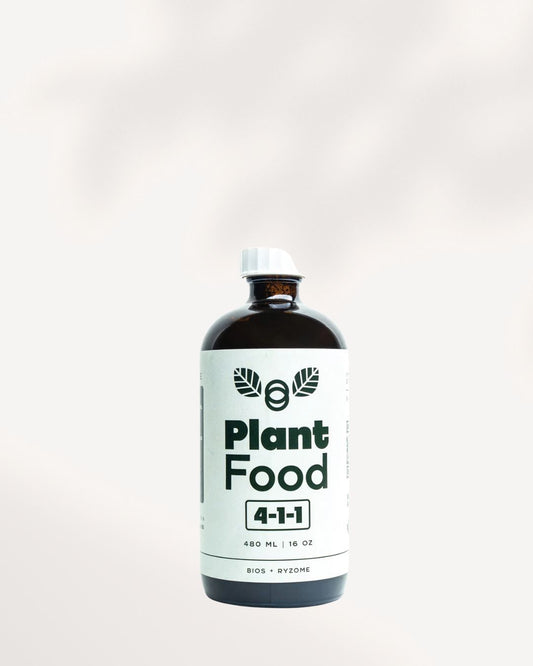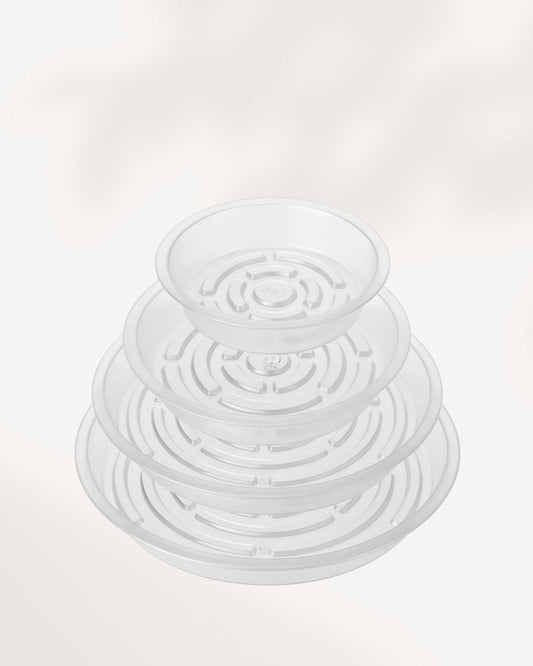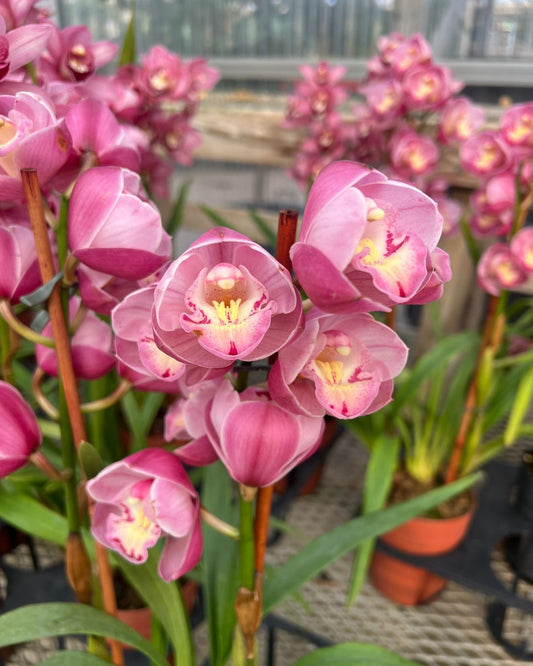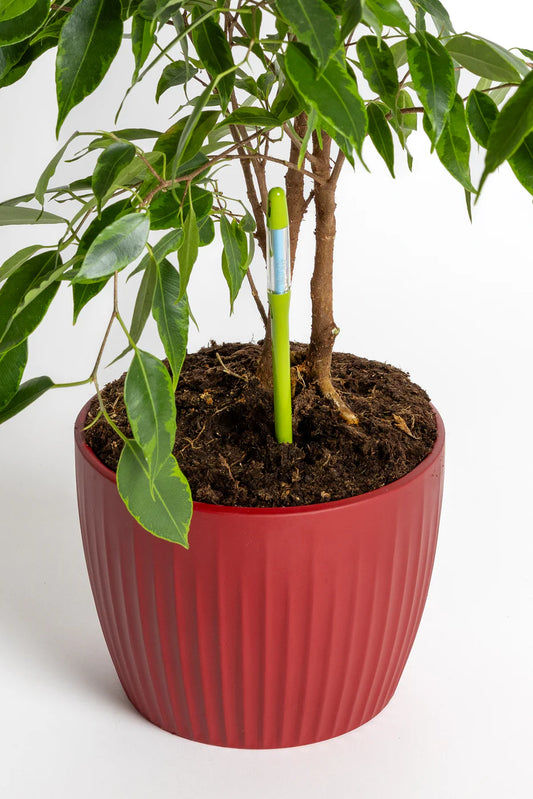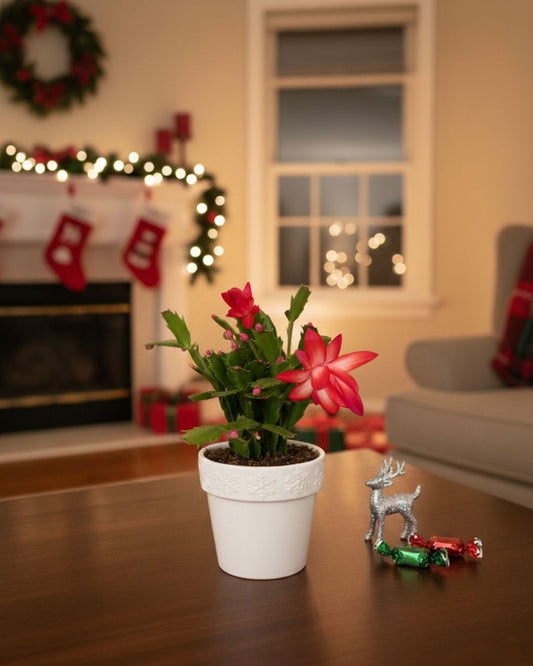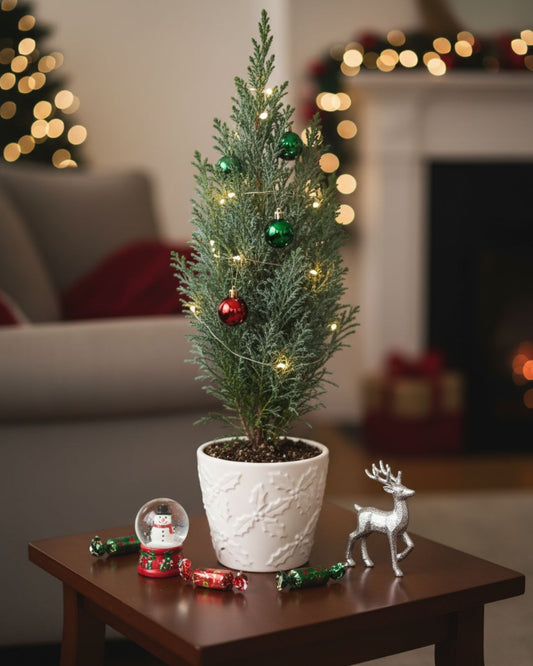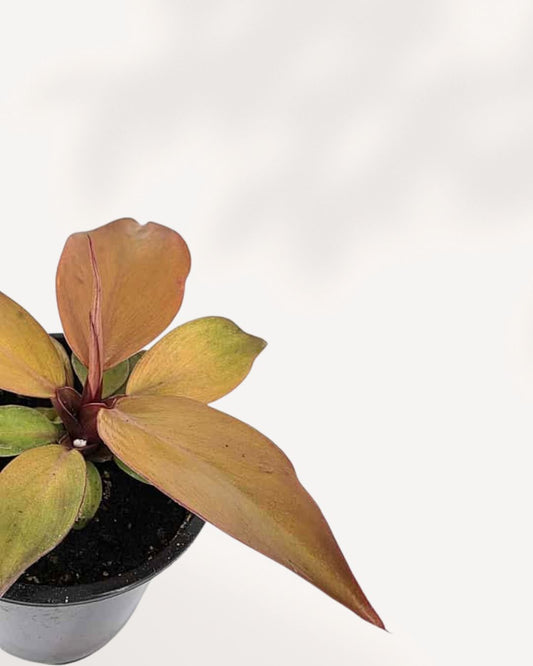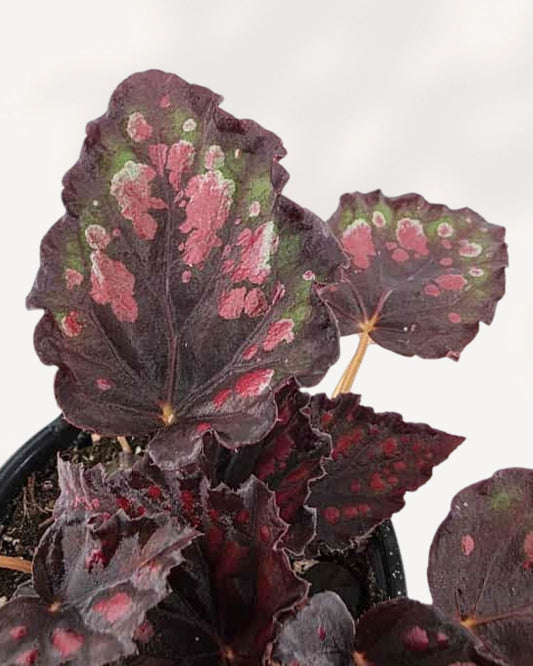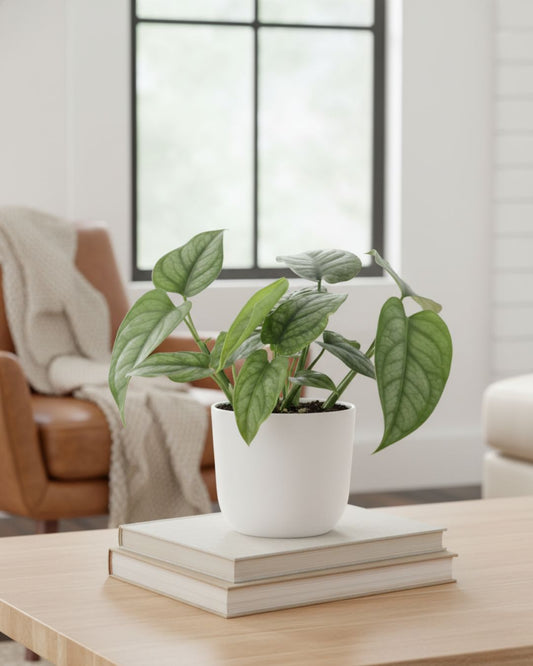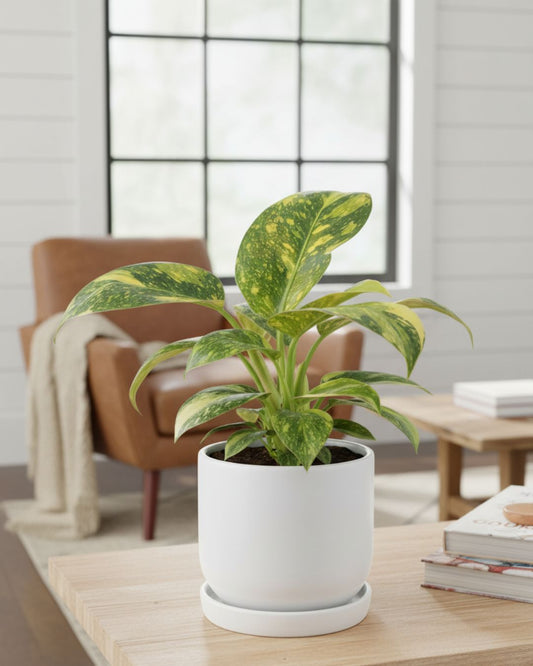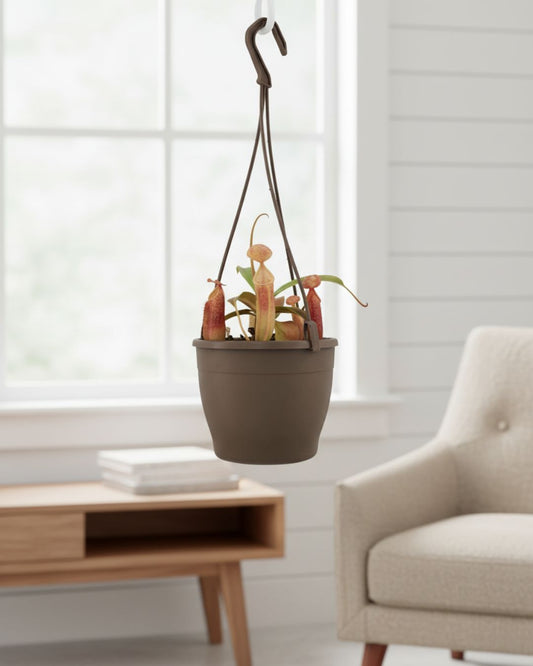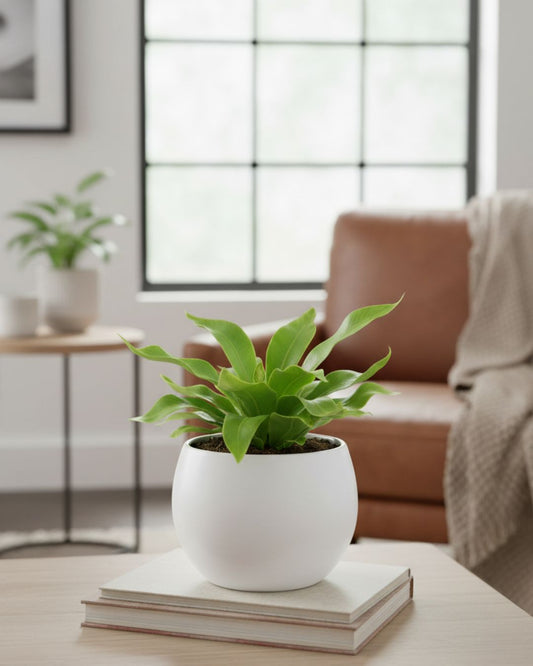How to care for Bromeliad Plant
| Back to Library |
Quick Care Overview
| Care Aspect | Details |
|---|---|
| Light | Bright, indirect light; avoid direct sun. |
| Water | Keep the central cup filled with water; water soil lightly when dry. |
| Soil | Well-draining potting mix with peat and orchid bark. Shop Potting Mix |
| Temperature | 60–80°F (16–27°C); avoid cold drafts. |
| Humidity | Prefers high humidity. Mist regularly or use a humidifier. |
| Toxicity | Non-toxic to pets and humans. |
Bromeliad Plant Care Guide | Light, Watering, and Propagation Tips
Learn how to care for Bromeliad plants with expert advice on light, watering, soil, and propagation. Perfect for brightening up indoor spaces with vibrant, long-lasting blooms!
Common Names
- Urn Plant
- Air Pineapple
- Flaming Sword Plant
Native Habitat
Bromeliads are native to tropical and subtropical regions of the Americas, including rainforests and mountainous areas. They naturally grow on trees (epiphytic) or on the ground (terrestrial).

Uses and Popularity
Bromeliads are admired for their exotic, long-lasting flowers and colorful foliage. They are ideal for adding a tropical touch to homes and offices due to their low maintenance and air-purifying qualities.
Bromeliad Plant Care Guide
Light Requirements
Bromeliads thrive in bright, indirect light. Direct sunlight can burn their leaves. Learn more about light requirements.
Watering Needs
Fill the central cup (tank) with water and change it regularly. Water the soil lightly when it feels dry. Avoid overwatering to prevent root rot.
Soil Preferences
Use a well-draining mix, such as orchid bark mixed with peat and perlite. Shop Indoor Potting Mix
Temperature & Humidity
Bromeliads prefer temperatures between 60–80°F (16–27°C) and high humidity. Mist leaves regularly or use a humidifier for best growth.
Fertilization
Feed monthly with a diluted liquid fertilizer during the growing season. Apply fertilizer directly into the central cup or lightly on the soil. Explore Natural Fertilizers
Pruning & Maintenance
Remove dead leaves and spent flowers to encourage new growth. Bromeliads produce pups (offsets) after flowering—these can be used for propagation.
Propagation Tips
Offsets (Pups)
Once pups are about one-third the size of the parent plant, carefully remove and replant them in fresh potting mix.
FAQs
How often should I water my Bromeliad?
Keep the central cup filled with fresh water and water the soil when it’s dry. Change the cup water weekly to prevent stagnation.
Why are my Bromeliad leaves turning brown?
Browning leaves can be caused by low humidity, underwatering, or exposure to direct sunlight. Adjust care conditions accordingly.
Can Bromeliads bloom more than once?
No, Bromeliads flower once in their lifetime. However, they produce pups (offsets) that will grow and eventually bloom.
The Positive Impact of Plants
-
Plants and Healing
Working with plants soothes the mind. It feels calming and healing, offering a peaceful break from daily life.
-
Plants for Recovery
Being around plants can speed up healing from sickness, making you feel better quicker in a natural way.
-
Plants and Work
Plants in your space may make your work better and faster, enhancing focus and creativity during tasks.
LETTING CUSTOMERS SPEAK FOR US!
Shop by Feature
FAQs for Plant Delivery in Ontario & Quebec
What types of house plants do you offer for delivery.
We offer a wide variety of houseplants for delivery. Here are some of the popular options: Aglaonema, Alocasia, Calathea, Hoya, Monstera, Palm, Peperomia, Philodendron, Pothos, Sansevieria Snake, Syngonium, Tradescantia.
What is the lifetime support?
All plants purchased from our store or through our workshops come with lifetime support. This means that whenever you have questions or concerns about your plant, we're here to help. Whether you're unsure about your plant's health or need advice, we can assist in identifying problems, answering your questions, and potentially saving your plant. Feel free to reach out to us on Instagram @mygreenscapeto or via email at support@mygreenscape.ca.
Where do Mygreenscape plants come from?
Our plants embark on a journey from various greenhouses across Canada. We prioritize short delivery routes to ensure your plant arrives happy, healthy, and full of vitality.
Do I have to repot my plants once they arrive?
Absolutely not! When your plant arrives, give it time to settle into its new home. Place it in the desired spot, and let it acclimate for about two weeks.
Favorite in our plant shop
-
Liquid Plant Fertilizer
Regular price From $30Regular priceUnit price per -
Plant Saucer
Regular price From $2Regular priceUnit price per -
Cymbidium Orchid
Regular price $89Regular priceUnit price per -
SUStee Soil Moisture Indicators
Regular price From $12Regular priceUnit price per -
Christmas Cactus
Regular price $12Regular priceUnit price per -
Ellwoodii Cypress
Regular price $18Regular priceUnit price per -
Philodendron 'McColley's Finale'
Regular price $15Regular priceUnit price per -
Begonia Rex 'Harmony Stained Glass'
Regular price $15Regular priceUnit price per -
Monstera Siltepecana
Regular price $15Regular priceUnit price per -
Philodendron Green Congo Nuclear
Regular price $45Regular priceUnit price per -
Nepenthes Sanguinea Pitcher Plant
Regular price $35Regular priceUnit price per -
Cobra Fern
Regular price $18Regular priceUnit price per
MyGreenScape is your go-to online shop for indoor plants in cities Ontario or Quebec, including Toronto, Montreal, and many more. Our mission is to add joy to your home, one leaf at a time. Explore our range of beautiful, air-cleaning plants from the comfort of your home. You can find beautiful indoor plants, pots for plants, garden tools, and hanging basket plants all in one spot. Our mission is to add joy to your home, one leaf at a time.
Buying plants online with us means no more carrying heavy pots or figuring out how to get big plants home. We deliver straight from the gardener to you, with eco-friendly packaging, across Ontario and Quebec. Expect your new green friends within 2-7 days.
Why choose MyGreenScape? Here’s why:
- Lifetime Support: We’re here for you always. Get all the help you need for your plants to flourish.
- 30-Day Happy Plant Guarantee: Not happy with your plant? Tell us within 30 days, and we’ll fix it.
- Easy Delivery: Fast, direct to your doorstep in Ontario or Quebec.
Hear from a happy customer, Sarah T.: "Buying plants was never easier. Quick, simple, and with great support from MyGreenscape."
Ready for easy, stress-free plant shopping? Visit us now and make your home greener. Join MyGreenScape for a hassle-free way to bring nature inside.



















